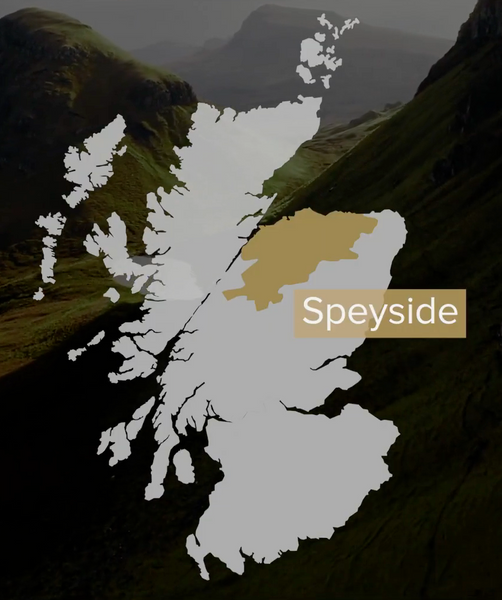
What the heck is that?

Speyside is officially recognised as a separate Scotch region. However, if you look at a map, you would realise that it is geographically a sub-region of the Highlands region. Its name is derived from the fact that it is a side of the Highlands carved away by the river Spey, which has been supplying water to distilleries in the vicinity for several centuries.

Who cares?
Dubbed the “Whisky Manhattan” of Scotland, Speyside has an extraordinary number of well-known single malt distilleries clustered within its small region. And quite a fitting nickname at that, because we would realise that Speyside is where premium Scotch whisky first became a phenomenon in the early 1800s.
Distillation had been taking place in the region since the late 1700s, although almost all the distilleries were unlicensed and operating unlawfully. Even back in the 1700s, there were laws requiring you to be licensed to produce whisky. However, it was financial unrealistic to operate legally due to arbitrary rules that made the operating costs too high.
Thankfully, the difficult mountainous terrain and remoteness of the Speyside region made the government practically give up on enforcing liquor laws there. The humble region offered illicit distillers and smugglers (who would export to the rest of Scotland) safe haven till the early 1800s.
Eventually, in 1822, King George IV discovered the illicit whisky being produced at the Glenlivet Distillery in the Speyside and fell in love with the angel’s nectar. His passion for Scotch from the Speyside region helped to advertise the quality of Speyside whisky throughout Great Britain.

Today, the Speyside region has around 50 whisky distilleries – despite being several times smaller than the rest of the Highlands (47 distilleries at time of writing). It also produces over 60% of all Scottish single malt (this excludes grain whisky). Very impressive figures for the Whisky Manhattan.
Why should I care? What is one thing to remember?
There is a perceived prestige to the label of a “Speyside distillery”. The region is also home to many of the biggest names in Scotch you might have heard of, such as The Macallan, Glenfiddich, Glenlivet and Balvenie.
Speyside whiskies are typically associated with the very beautifully balanced flavour profiles of these brands, whether it is the sweet, floral and appley Glenlivet, the honeyed and spicy Balvenie, or the rich and nutty Macallan. These whiskies are great all-rounders that are loved by many drinkers.
However, there is a lot more to Speyside that would appeal to many a connoisseur. Aberlour is known for its very intense and robust “sherry bombs” that fill the palate with sweet fruitcake and raisins. Craigellachie is known for marrying rich vanilla notes with a meaty, savoury ham-like note.
First-time drinkers could try starting with the usual suspects – any one of The Macallan, Glenfiddich and Glenlivet and Balvenie is very friendly on the palate and offers a great introduction. Thereon, there is still a deliciously diverse world of Speyside whiskies to discover.







